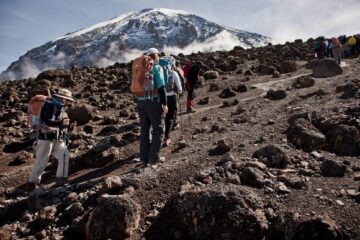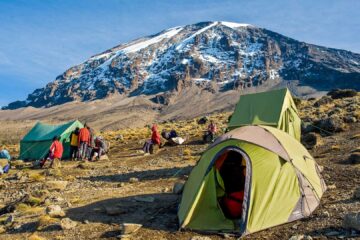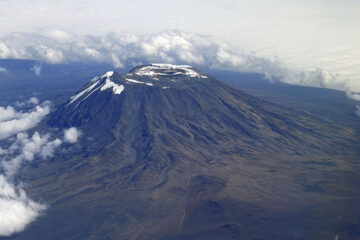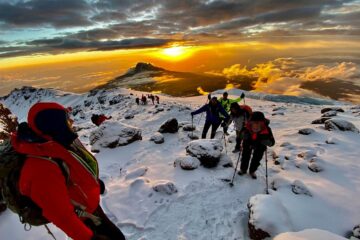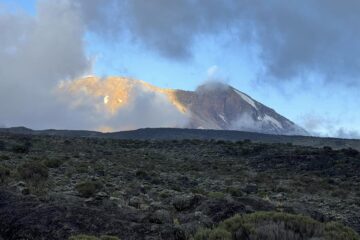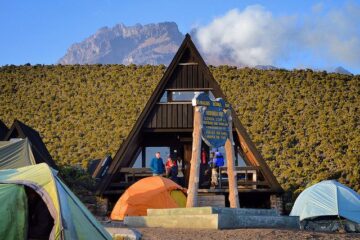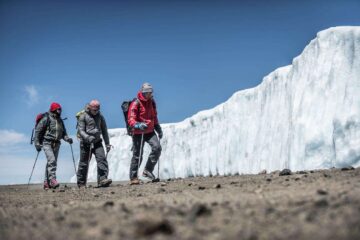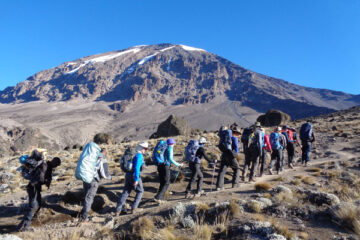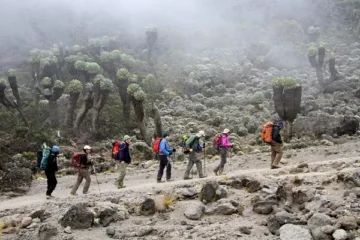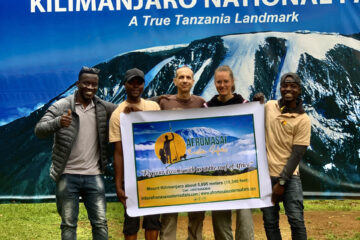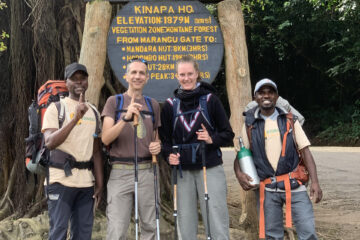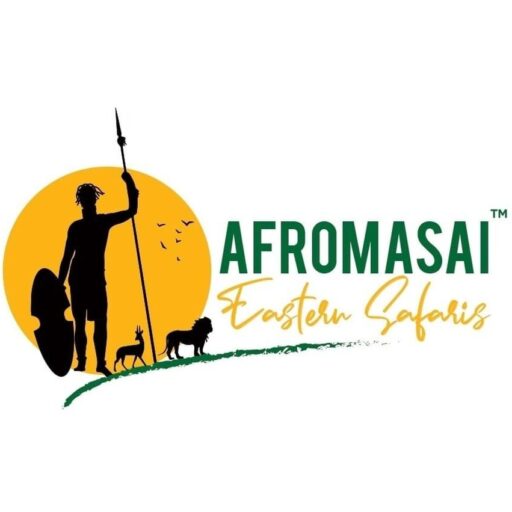Unveil the unparalleled allure of Mount Kilimanjaro Climbing, a journey cherished by intrepid souls worldwide. Towering majestically at an astonishing elevation of 5,895 meters (19,341 feet), Kilimanjaro stands as Africa’s tallest freestanding mountain, offering an extraordinary odyssey through breathtaking landscapes and diverse ecosystems. Beyond its sheer height, scaling Kilimanjaro embodies an exceptional testament to resilience and triumph.
Prior to your ascent, meticulous preparation is paramount. Our in-depth guide equips you with invaluable insights, encompassing physical conditioning, mental fortitude, and essential gear recommendations tailored for this unique climb. With our expertise, you’ll be primed to embrace the challenges and revel in the victories of conquering Kilimanjaro’s legendary summit.
Nestled in Tanzania, East Africa, Kilimanjaro’s iconic silhouette dominates the horizon, inviting adventurers to partake in its mesmerizing ascent. Encompassed by the Kilimanjaro National Park, this dormant volcano harbors a wealth of unique flora and fauna, enhancing the allure of the climb. As Africa’s highest peak and a coveted member of the illustrious seven summits, Kilimanjaro transcends mere geographical prominence, inspiring explorers and nature aficionados to embark on an unparalleled voyage of discovery and accomplishment.
Choosing the Best Route for Mount Kilimanjaro Climbing
Kilimanjaro offers several routes, each with its challenges and attractions. Whether you’re a seasoned hiker or a first-time climber, we’ll help you choose the route that suits your preferences and fitness level. Kilimanjaro Mountain offers Eight ascent routes but Six routes are major popular than the others.
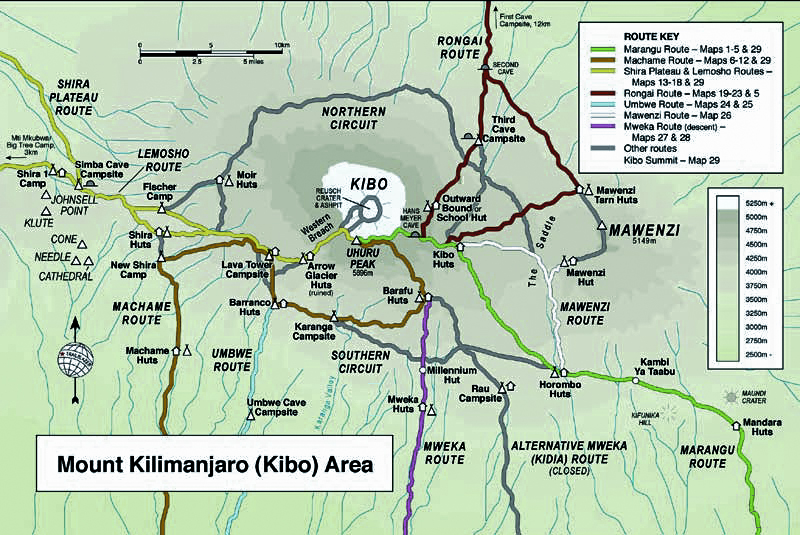
-
- Machame Route
- Marangu Route
- Lemosho Route
- Shira Route
- Rongai Route
- Umbwe Route
- Northern Circuit
- Western Breach
Beyond the physical exertion, Kilimanjaro offers climbers breathtaking vistas and unique ecological zones. From lush rainforests to alpine deserts, each day of your ascent brings you closer to the summit, unveiling the mountain’s natural wonders. We glimpse the flora, fauna, and geological features that adorn Kilimanjaro’s diverse landscape.
The Summit: Uhuru Peak: Reaching Uhuru Peak, the highest point on Kilimanjaro Mountain, is an accomplishment that thrills climbers with an overwhelming sense of pride and awe. We share inspiring stories from fellow climbers who have stood atop Africa’s rooftop, giving you a taste of the emotions and rewards that await you.
Embarking on a Mount Kilimanjaro Climbing expedition is a life-changing experience that pushes your limits and rewards you with memories that will last a lifetime. Our guides and safari Experts will delve into the details of Kilimanjaro mountain climbing, providing you with essential information, tips, and insights to make your journey successful and unforgettable.
When is the Best Time to Climb Mt Kilimanjaro?
You can Climb Mt Kilimanjaro anytime in a year however, certain months are better than others. Tanzania has two seasons which are the rainy season and the dry season, we usually advise our visitors to choose the dry season because the rainy season can be dangerous. Normally the dry seasons are from December to mid-March and mid-June to the end of October. In Mount Kilimanjaro Climbing we avoid April and November since these are times rainy seasons making it difficult to hike in Mt Kilimanjaro.
What to Pack When Hiking Mt Kilimanjaro?
We advise our travelers to pack things that are prior to them during Hiking to Mt Kilimanjaro before reaching the next Campsite while maintaining a manageable weight. Here are some of the essential items that you should pack before beginning your Mt Kilimanjaro expedition.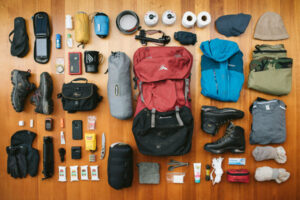
- Waterproof thigh-length Jacket (Gorex or Similar)
- T-shirt (Synthetic material the best as cotton retains moisture)
- Gloves (waterproof warm outer + thin liner )
- A warm hat (or balaclava) that covers the ears
- Waterproof walking boots (Well broken-in)
- Waterproof outer trousers- warm mid-layer (fleece or down)
- Warm long-sleeved shirt- Warm walking trousers (not jeans)
- Thermal underwear – Walking socks (Several Pairs)
- Walking Shorts
- Trainers or soft shoes for Relaxing
- Sun Hat
- Gaiters
- Camera
- Water flask
- Headlamp
- Glacier glasses (or good quality sunglasses ? preferably with side shields)
- Personal first aid kit & essential medication
- Wet wipes
- Warm sleeping bag (3/4-season)
- Sleeping bag liner
- Trekking pole(s) – can be hired locally
- Small towel
- Headtorch & spare batteries
- Spare plastic bags
- Waterbottle( Water Flask) – minimum 3 liters capacity
- High factor sunscreen & lip salve
- High-energy snacks, dried fruit, nuts, sweets, etc. NB: hang on to some till the last day – you’ll appreciate them more!
- A small bottle of cordial or squash concentrate (to liven up the ? flat? taste of boiled water)


